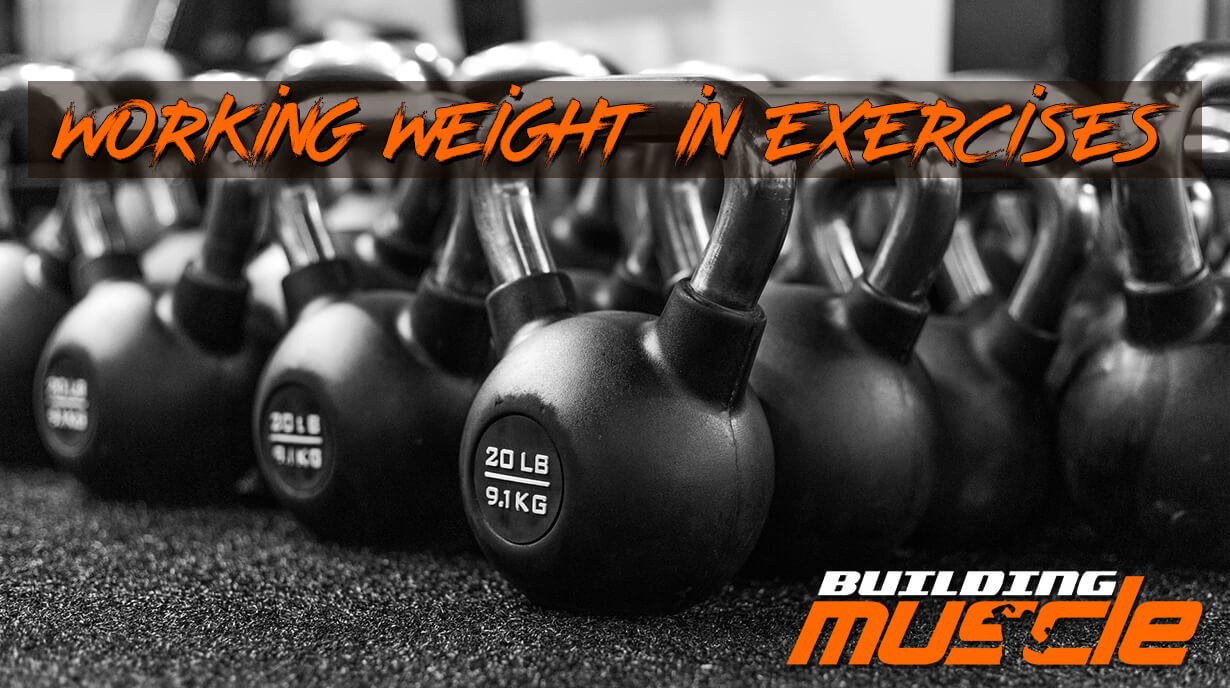
Correctly calculated working weight is not only a necessary condition for gaining muscle mass and building bulky and tough muscles, but also a protection against potential injuries that can cost a bodybuilding enthusiast progress for many months. You can’t really work out with injuries, which leads to stagnation or regression of results. Exactly the wrong weight in the exercise, along with poor technique, is the main cause of injuries in strength sports.
That is why today we want to help beginners by providing recommendations on selecting the optimal free weights for their strength training. Read in our today’s article how many bars to hang on the bar not to destroy muscles, joints or bones, but to create conditions for muscle growth.
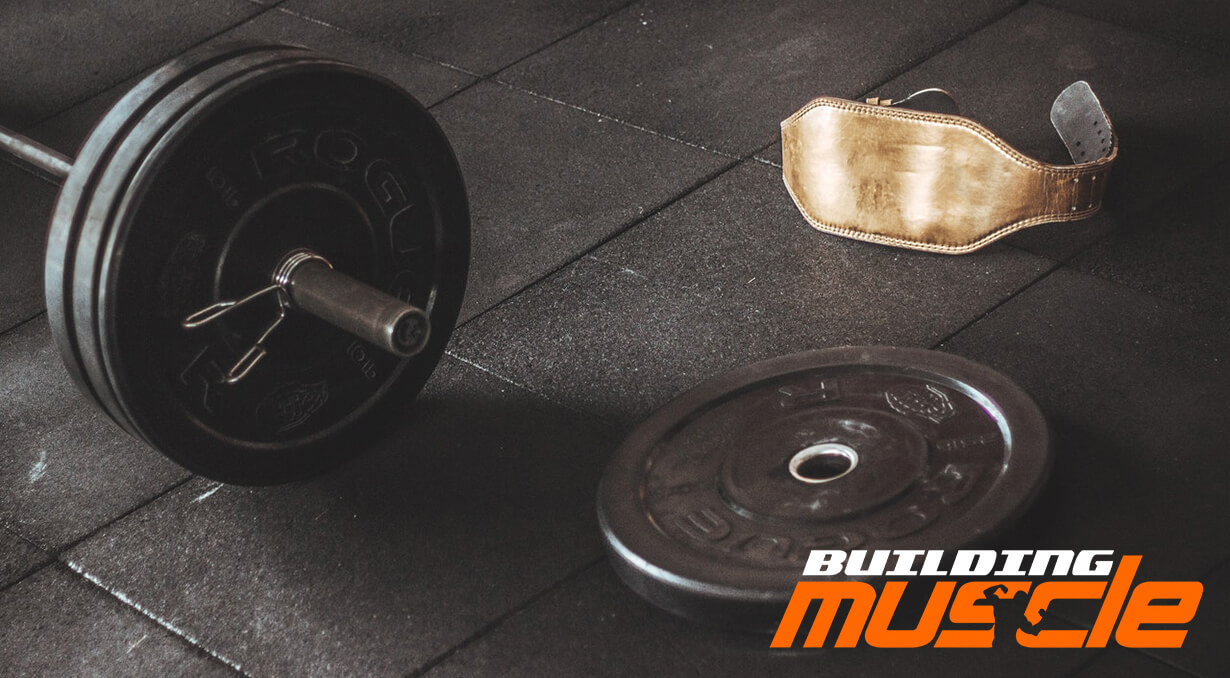
Calculation of working weights in exercises
All strength exercises performed at the gym are usually divided into two types – basic (multijoint) and isolating (single-joint). That is, the isolating exercises involve only one major joint, and the basic exercises can use several joints at once. The bench press is a good example of multijoint exercises. The French bench press is a single-joint exercise.
When performing basic exercises, which have the maximum effect on the recruitment of muscle mass and growth of strength compared with isolation exercises, it is extremely important to select the correct working weights. Because this factor is of no small importance for the technique / efficiency of movements. The price of a mistake is, at best, a decrease in productivity.
How to calculate the correct working weight for your workouts? The basis here is percentage (%) of maximum possible weight. It is also necessary to determine in advance the complexity of the upcoming workout – whether it will be light, normal or heavy. The bottom line is that in light walkout most exercises are performed with 60-65% of the athlete’s maximum weights, in ordinary – with 70-75%, in heavy – with 80-85%.
For clarity, we suggest considering an example of the selection of optimal weights for the basic exercise Bench Press (on a horizontal bench).
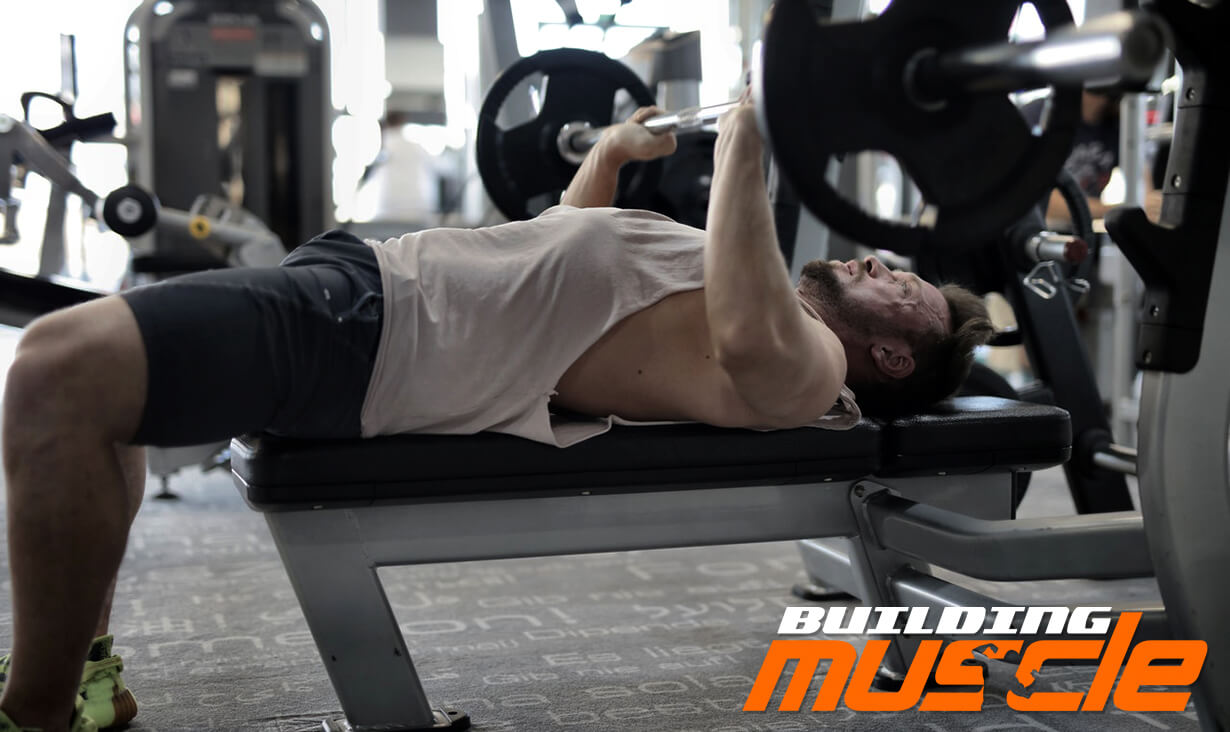
Selection of optimal weights on the example of the bench press:
Let us assume you have established that your maximum weight for the horizontal barbell press is 75 kilograms. Thus, the following workload calculations are obtained at different workload levels:
- Light training – 75 x 0.6 (or 0.65) = 45 or 48.75 kg, an average of 45-50 kg;
- Regular – 75 x 0.7 (or 0.75) = 52.5 or 56.25 kg, 50-55 kg on average;
- Heavy – 75 x 0.8 (or 0.85) = 60 or 63.75 kg, an average of 60-65 kg.
We recommend rounding to a whole number, since barbell pancakes almost always come in whole numbers. In the case of light and normal training – to a whole number downwards. In the case of heavy workouts, round to a whole number up. If anything, you can always adjust the size of the weight during the workout as you feel more comfortable.
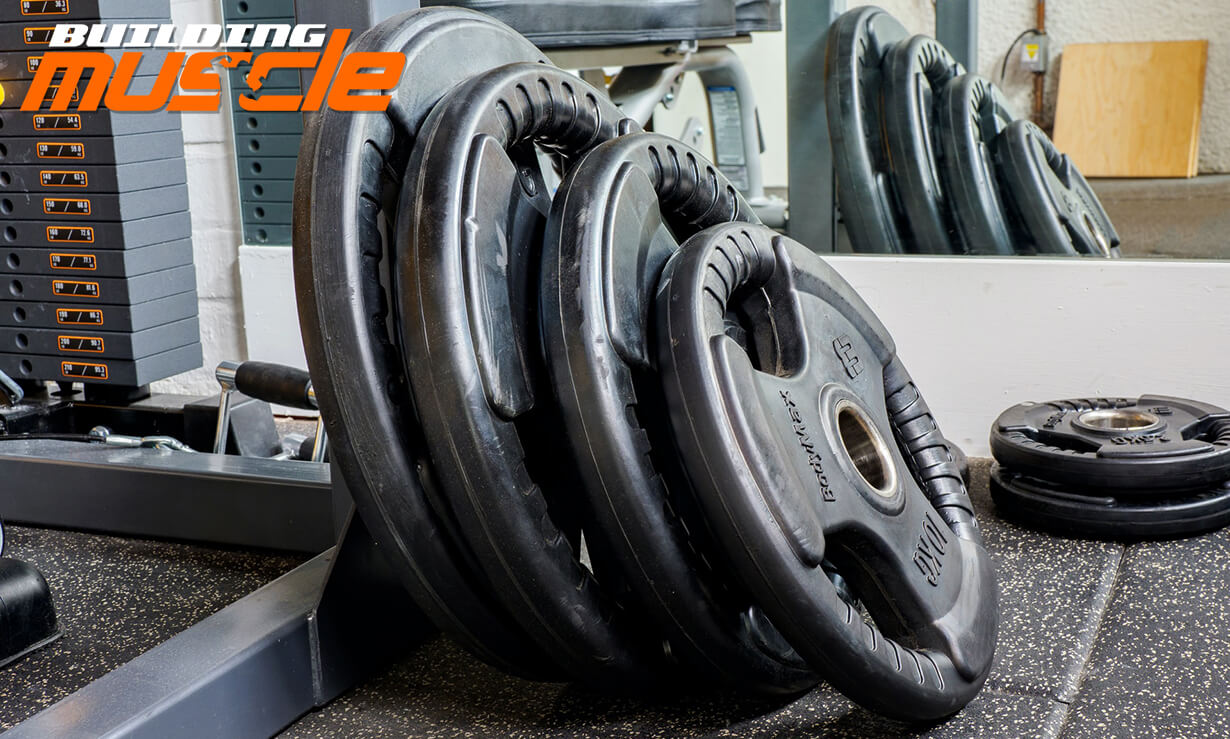
And what is a light, usual or heavy workout? There is nothing complicated here too. Usually light exercise is calculated on performance of 12 reps in one turn, regular exercise – on 8 reps, heavy – on 6 reps.
In general, everything is very simple and logical – 5th grade math.
And if you take isolation exercises, such as biceps dumbbell raises, arm combinations in crossovers or leg bends lying on a bench, then everything is not so straightforward. Because of the huge number and variety of movements, it is impossible to create a single formula that would work in most situations. You will have to be guided by your own sensations while exercising, reducing or increasing the load according to your current needs.

Again, rely on logic and numbers. After all, bodybuilding refers to the exact sciences, not astrology or homeopathy. When the training should be heavy – make it heavy, so that it is really difficult in the last approach of the exercise. Light means the exercise should be done without extra, excessive effort during each approach.
How can you determine the maximum weight for yourself?
As already mentioned, it is not possible to calculate the exact working or maximum weight for isolation exercises. And in the case of a beginner jock it does not make much sense at all, because he first of all needs to focus on basic exercises, which lay the foundation of physical form (strength and muscle mass).
Next, we will present for your choice three basic ways in which you can calculate the maximum weight for a workout. Obviously, they will only apply to basic, multijoint type exercises.
Method 1: Theoretical
First, to calculate the personal maximum in an exercise, you can use the following universal formula: multiply the working weight in a technically correctly performed exercise of 5 sets of 6 repetitions by a factor of 1.2. The resulting value in kilograms will be the maximum weight for you in a particular exercise. But there is one condition: initially the exercise must be performed with such weight that it is physically impossible to add 1 more approach of 6 reps (due to accumulated physical stress, i.e. muscle fatigue, or lack of strength performance).
Suppose, working out at a gym, you have managed to do a 100-pound barbell deadlift by doing 6 reps in 5 approaches without a technical failure. At the same time, the 6th approach, no matter how you want it, cannot be added without decreasing the weight of the barbell. So, you can safely take this figure (100 kg) and multiply it by 1.2 to calculate the maximum weight in this basic exercise.

Method 2: Practical
The second method of selecting maximal weights for workouts is generally accepted to be the most accurate. The point of this method is that when you come to the training and fully warmed up you must experimentally, adding 5-10 kg to the barbell with every step and by the feel of it determine the maximum possible weight for yourself. The process is not quick, but it is almost error-free. And can be used even for some isolation exercises.
The step does not necessarily have to be 5-10 kilograms. If you are just starting out and are confident in your strength, no one forbids throwing 20-30 kilograms at a time. And nearer to the end, when you will approach your personal maximum, the step can be reduced to 1-5 kilograms. You will have to rely mainly on your own feelings, so act as you think necessary.
How do you know that you have reached your maximum? It will be the weight which it is impossible to lift more than 1 time without gross violation of exercise technique. You can safely use this figure for the remaining calculations, whether it is a heavy, regular or light version of the barbell squat.
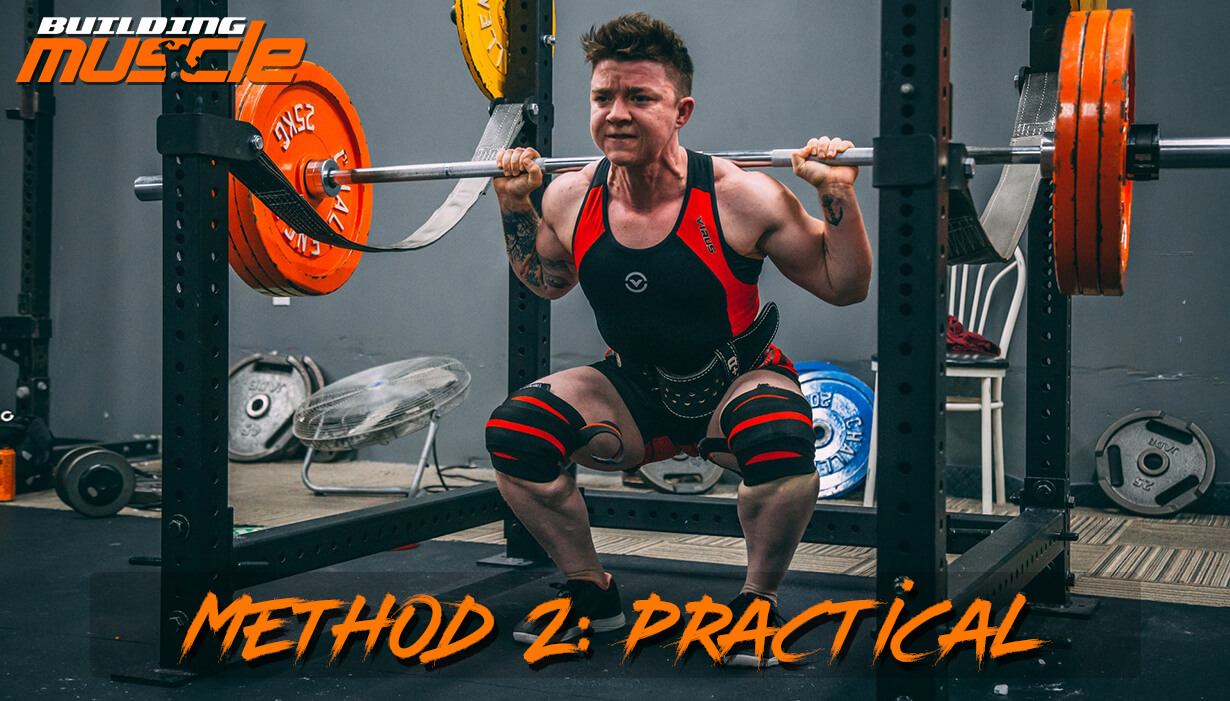
Method 3: Online calculators
The most unreliable, but the most accessible, of the three methods. Go to “Google Play” or “App Store” on your phone and download the app you like to calculate the optimal weight, number of sets and reps in exercises. Typically, these apps use the formulas of Brzycki, Watan, Lombardi, Lander, Mayhew, O’Connor, or Apley. If for some reason you don’t have your phone handy, no problem. There are similar calculators on numerous bodybuilding sites. Just use a search on the Internet.
You will be asked for your gender, age, height, weight, workout experience (and probably a few other variables), and the output will be approximate figures for specific exercises or tasks – increasing your strength and increasing muscle mass or burning subcutaneous fat.
What is the right way to increase work weights?
For strength training to be productive, it is necessary to know not only your working and maximum weights, but also the basics of bodybuilding. In particular, it does not hurt to figure out how to correctly increase weight in exercises. Especially this information is useful on the initial stages, when under the influence of regular exercise, proper nutrition and full recovery, there is a rapid improvement in physical form. Subsequently, the closer the athlete gets to the genetically determined limit, the less attention is paid to progression by lifting heavier and heavier equipment.
There are several variations in the development of the situation. When you understand that the current load in an exercise is not the load at all, first, you can safely increase weight on the bar (in the range of 2.5-10 kg on average at a time). The second option for increasing training volume would be to change (increase) the number of sets and reps. The third is a combination of the first and second options. Additionally, the bodybuilder can always use one of the many techniques of strength training, for example: super approaches, partial reps, forced reps, pyramid principle; isometric, high-intensity or split-type training.

But it is worth noting that a systematic increase in the size of dumbbells or the weight on the bar has a positive effect on both the final results and the technique of exercises. The latter minimizes the injury hazard of the exercises themselves. The saying “the quieter you ride, the farther you’ll be” exists for a reason.
Another necessity for beginners, and not only beginners, is to keep a training diary. Progress (or regression) in exercises is recorded in it, i.e. an athlete records the number of approaches and reps performed, rest time, work volume in terms of weights and other information at his/her own discretion. Knowing clearly what equipment was used when, you can easily adjust the difficulty of the exercises, should the need arise.
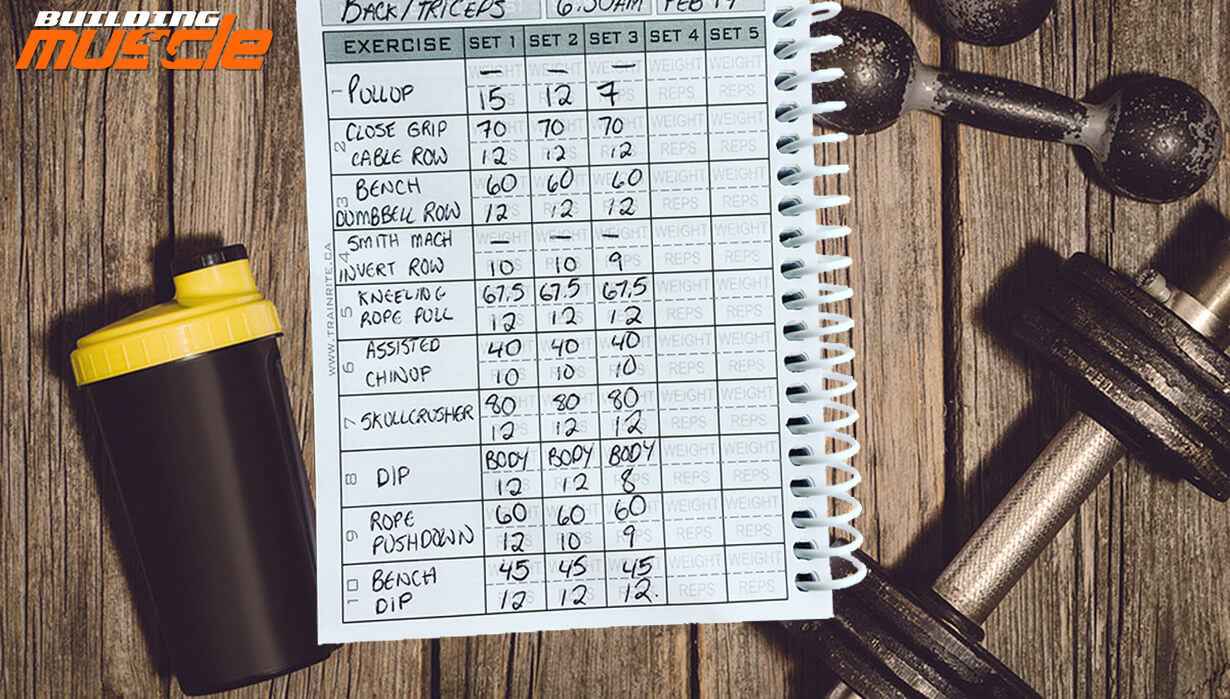
To summarize:
- Don’t rush to increase free weights;
- Workload can be increased in other effective ways;
- Keep regular records to track your progress at the gym.
There is no such thing as the best exercises in bodybuilding. Here much depends on personal preferences, habits, and specific objectives. Nevertheless, it is possible to identify a group of exercises that are most effective for the purpose of gaining muscle mass (at least during the laying of the foundation of physical form). These are classic basic exercises, from different variants of presses to squats with barbells.
Note that in most cases, basic exercises in the range of 6 to 12 repetitions are chosen for gaining muscle mass.













No Comments